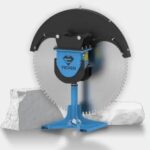Research suggests that 72% of customers associate the quality of promotional products with the reputation of your brand. When used strategically, promotional products can strengthen brand visibility, support customer retention, and foster engagement while helping to maintain business partnerships.
The selection of suitable promotional items, including branded pens for business, depends on several factors that help align product representation with marketing goals.
Define Your Goals
Start by clarifying whether promotional items such as those available at https://www.saveyourink.com will primarily expand brand awareness, strengthen customer relationships, facilitate new connections, or support sales growth.
For example:
- Items designed for high visibility, such as tote bags or t-shirts, may be more effective for brand awareness campaigns.
- Promotional giveaways with QR codes could help capture new leads.
- Premium notebooks or customized drinkware might serve as thoughtful gifts to show customer appreciation.
Clearly defined goals can help narrow your options, increasing the likelihood of choosing promotional items that align with your marketing objectives.
Understand Your Target Audience
To maximize impact, select promotional items that your audience will find both appealing and practical. Consider:
- Key factors like demographics, location, and budget.
- Lifestyle preferences—for instance, tech enthusiasts might appreciate USB drives, while fitness-focused individuals could prefer branded water bottles.
- Industry-specific needs, such as office supplies for professionals.
Insights into audience preferences can be gathered through market research, customer feedback, or past campaign data.
Align with Your Brand Identity
Choosing items that reflect your brand’s identity helps reinforce recognition and fosters consistency. Consider:
- Using brand colors to create visual harmony.
- Placing your logo prominently but tastefully.
- Match the product’s tone to your brand voice—playful brands might opt for stress balls, while professional businesses could lean toward office accessories.
A cohesive approach strengthens brand perception and can enhance memorability.
Consider Practicality and Usefulness
The most effective promotional items tend to be practical and frequently used. Examples include:
- Everyday essentials: Pens, notebooks, reusable bags.
- Tech gadgets: Power banks, USB drives.
- Lifestyle products: Travel mugs, fitness bands.
Products that offer genuine utility are more likely to be kept and used, extending brand exposure.
Focus on Quality and Durability
High-quality promotional items reflect professionalism, whereas low-quality products risk leaving a negative impression. Look for:
- Durable materials that ensure longevity.
- Logos that remain legible over time.
- Items that perform as expected.
Investing in quality supports a positive brand image and encourages customer satisfaction.
Customization and Branding
Effective promotional products incorporate branding elements like logos, slogans, or contact details. Consider these customization options:
- Full-color printing for a vibrant, eye-catching finish.
- Embossing or engraving to elevate premium items.
- Unique designs that stand out.
- Personalized names to create a stronger connection.
Distinctive branding helps increase recognition among recipients.

Budget and ROI Considerations
When planning your budget, account for:
- Production, customization, and shipping costs.
- Potential bulk-order discounts.
- The perceived value of premium products which may yield higher engagement.
- Long-term exposure from durable items.
Evaluating these factors can help boost your return on investment.
Distribution Strategy
How you distribute promotional items matters just as much as the items themselves. Consider these approaches:
- Trade show giveaways to attract booth visitors.
- Corporate gifts for loyal customers or employees.
- Direct mail packages enhanced with small branded items.
- Freebies to encourage customer loyalty.
- Social media contests using promotional items as prizes.
A well-planned distribution strategy ensures your items reach the right audience.
Final Thoughts
Selecting promotional products that align with your brand and resonate with your audience can contribute to stronger recognition and improved marketing ROI. When chosen thoughtfully, promotional items become a valuable tool for engaging customers and supporting business growth.
Disclaimer: This article is for general informational purposes only and does not constitute professional advice. The content provided is not intended to ensure the success or effectiveness of promotional strategies or products. Results may vary based on individual circumstances, market conditions, and audience needs. Readers should conduct their own research and consult with relevant professionals before making any decisions.
Published by Jeremy S.

















